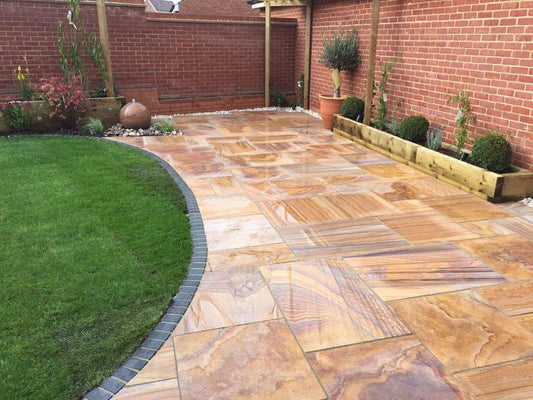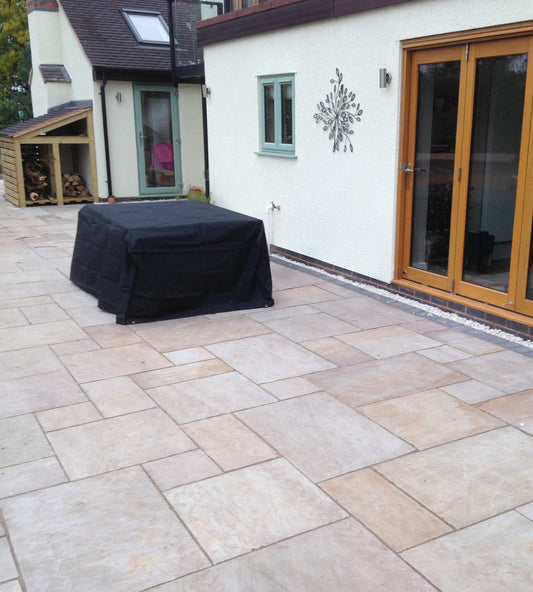
Does Paving Need Sealing? Sandstone & Porcelain Guide
Share
Sealing your paving can greatly enhance its durability and appearance. While it’s not always essential, the need for sealing depends on the material you choose, such as porcelain, Indian sandstone, or limestone. Let’s explore when sealing is necessary and how to do it right.
Does Sandstone Paving Need Sealing?
sandstone paving generally needs sealing. It is a porous material, meaning it easily absorbs moisture and other substances that can cause staining and damage. Sealing helps prevent these issues by repelling water, oil, and other contaminants, which simplifies maintenance. Sandstone types like Indian sandstone, including Kandla grey, are particularly popular and benefit from sealing to maintain their natural beauty and durability.Does Porcelain Paving Need Sealing?
porcelain paving typically does not require sealing due to its low porosity and high resistance to stains and weather conditions. However, sealing can be beneficial in high-traffic areas or where frequent spills occur, as it provides an extra layer of protection and simplifies cleaning. Porcelain paving is available in various sizes, such as 900x600mm and 600x600mm, catering to different design needs.Factors to Consider When Sealing Paving
When deciding whether to seal your paving, consider factors like climate, maintenance needs, aesthetic preferences, and timing. Sealing is advantageous in harsh climates to prevent moisture-related damage, such as cracking. It also makes the paving easier to clean and maintain while enhancing its natural colors and textures. If laying paving in winter, ensure conditions are suitable for sealing to avoid complications like paving cracking.How to Seal Your Paving
To seal your paving effectively, follow these steps:- Thoroughly clean the surface to remove dirt, debris, or old sealant.
- Ensure the paving is completely dry before applying the sealer.
- Use a high-quality, breathable sealer suitable for your paving type.
- Apply the sealer evenly using a brush, roller, or sprayer as directed by the manufacturer.
- Allow the sealer to dry and cure for the recommended period.






